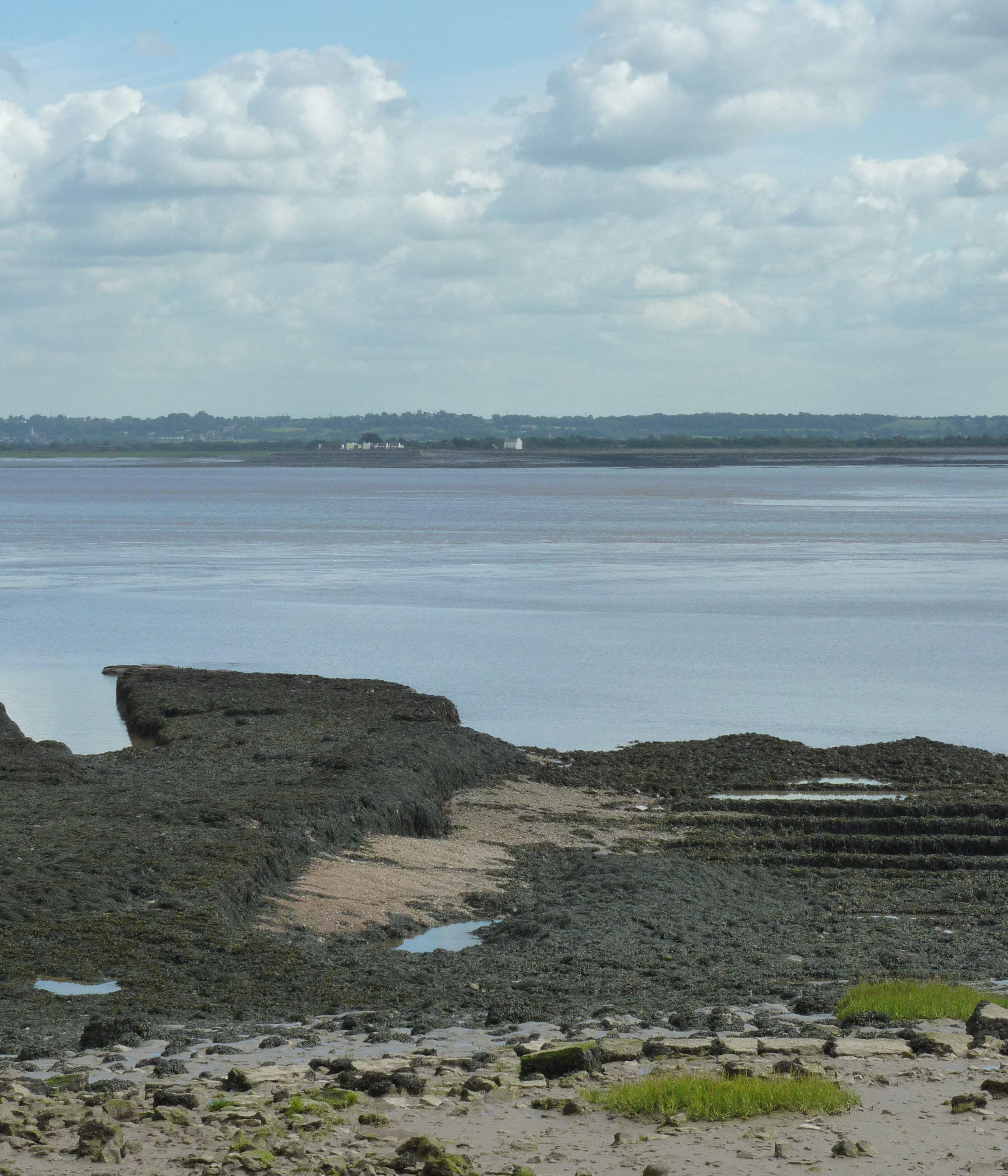|
New Passage Pier Railway Station
New Passage Pier was the original terminus of the Bristol and South Wales Union Railway, located on the south bank of the River Severn at New Passage, South Gloucestershire, England. At New Passage, passengers would disembark from trains and use a boat across the Severn. New Passage had been the site of a ferry from England to Wales including the use by mail and passenger coaches between Bristol and to Portskewett in south Wales. In 1825 the New Passage Association formed, using the 30-ton steamboat "St Pierre". However, the sponsorship by the Dukes of Beaufort of the Aust route, with faster boats and a pier, meant that by 1830 mail coaches were diverted there, and the New Passage declined. Construction of the new railway started in 1858 and the single-track broad gauge line opened from South Wales Junction, half a mile east of Bristol Temple Meads, as far as the landward end of New Passage Pier on 8 September 1863, a distance of . The distance by rail between Bristol and Card ... [...More Info...] [...Related Items...] OR: [Wikipedia] [Google] [Baidu] |
New Passage
New Passage is a hamlet in South Gloucestershire, England, on the banks of the Severn estuary near the village of Pilning. It takes its name from the ferry service which operated between there and South Wales until 1886. Ferry History New Passage was for many years the location of a ferry crossing to and from South Wales, running from Chestle Pill near Pilning to Black Rock at Portskewett in Monmouthshire. The route provided an alternative to the centuries-old Aust ferry two miles (3 km) upstream, known as the "Old Passage". The New Passage, which offered a more direct route to South Wales, was probably in operation from 1630, when the New Passage Ferry Company was formed.Northwick Bristol and Avon Family History Society, accessed 27-03-18 The ferry was said to have been discontinued between 1645 and 1 ... [...More Info...] [...Related Items...] OR: [Wikipedia] [Google] [Baidu] |
Pier
image:Brighton Pier, Brighton, East Sussex, England-2Oct2011 (1).jpg, Seaside pleasure pier in Brighton, England. The first seaside piers were built in England in the early 19th century. A pier is a raised structure that rises above a body of water and usually juts out from its shore, typically supported by piling, piles or column, pillars, and provides above-water access to offshore areas. Frequent pier uses include fishing, boat docking and access for both passengers and cargo, and oceanside recreation. Bridges, buildings, and walkways may all be supported by Pier (architecture), architectural piers. Their open structure allows tides and currents to flow relatively unhindered, whereas the more solid foundations of a quay or the closely spaced piles of a wharf can act as a Breakwater (structure), breakwater, and are consequently more liable to silting. Piers can range in size and complexity from a simple lightweight wooden structure to major structures extended over . In Amer ... [...More Info...] [...Related Items...] OR: [Wikipedia] [Google] [Baidu] |
Railway Stations In Great Britain Closed In 1886
Rail transport (also known as train transport) is a means of transport that transfers passengers and goods on wheeled vehicles running on rails, which are incorporated in tracks. In contrast to road transport, where the vehicles run on a prepared flat surface, rail vehicles (rolling stock) are directionally guided by the tracks on which they run. Tracks usually consist of steel rails, installed on sleepers (ties) set in ballast, on which the rolling stock, usually fitted with metal wheels, moves. Other variations are also possible, such as "slab track", in which the rails are fastened to a concrete foundation resting on a prepared subsurface. Rolling stock in a rail transport system generally encounters lower frictional resistance than rubber-tyred road vehicles, so passenger and freight cars (carriages and wagons) can be coupled into longer trains. The operation is carried out by a railway company, providing transport between train stations or freight customer faciliti ... [...More Info...] [...Related Items...] OR: [Wikipedia] [Google] [Baidu] |

